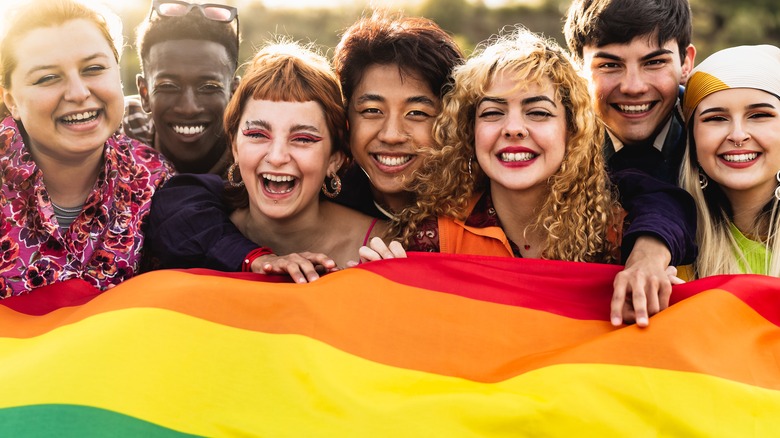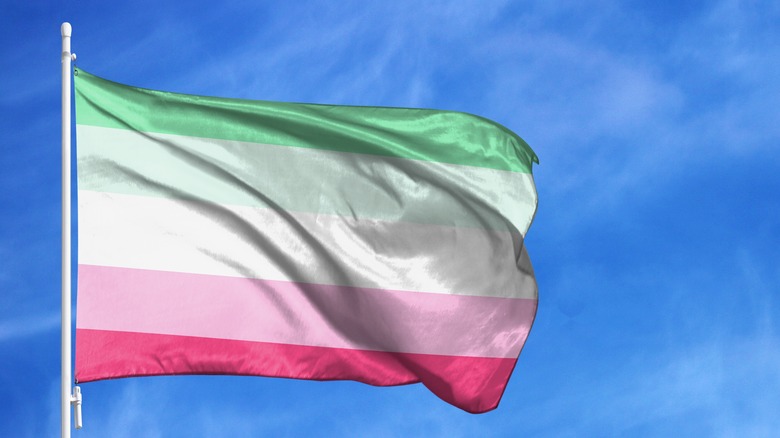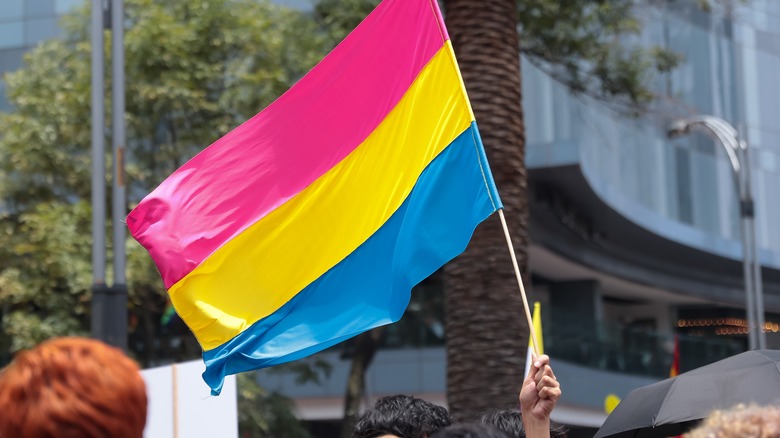Abrosexual Vs. Pansexual: What's The Difference?
Human sexuality is a vast spectrum with many different ways to identify. Whether you are gay, straight, lesbian, bisexual, asexual, or any other orientation, having labels to describe how we feel can be a helpful tool to feel connected to others and to better understand ourselves. These labels can also feel slightly restrictive and exclusive at times. Sexuality does not necessarily fall under the most commonly known labels. There are people whose sexuality is fluid and changing, and there are people who experience attraction regardless of gender and sexual orientation.
Abrosexuality and pansexuality are both sexual orientations that fall under the category of "multisexualities," which includes people who are sexually and/or romantically attracted to more than one gender. Though they share some similarities, there are distinct aspects that set them apart from each other. There are also a few misconceptions about each of them that people seem to get wrong. Let's break them down.
What does it mean to be abrosexual?
A person's sexual orientation doesn't always remain permanent but can instead be fluid and changing. For some people, their attraction and sexual desire for people change throughout their lives, and this is known as abrosexuality. Abrosexual people may identify as gay for years, and then at a different point in their life, they might feel attracted to people of all genders. Taking a look at the word's root, "abro" is a Greek word that translates to "graceful" or "delicate," which helps to describe the fluctuation of sexuality. Abrosexual people don't often feel firmly connected to only one orientation, so the term "abrosexual" may feel more at home.
Abrosexual people also experience differing intensities of attraction over time. For instance, a person who identifies as abrosexual may have a more intense attraction to men at one moment compared to the next. Some consider this sexual orientation to be on the asexuality spectrum as well because there can be periods when the person feels asexual and lacks sexual interest in others.
Misconceptions about abrosexual people
People who are unfamiliar with abrosexuality may feel compelled to believe that abrosexual people are just "confused" or "indecisive." This is simply not true and creates a stigma for people who are trying to live as their authentic selves. Rather than remaining confined to a box, or one label, abrosexual people embrace their fluidity and varying attractions to people.
These misconceptions can often make it difficult for many abrosexual people to seek out relationships due to the fluid nature of their attraction. Many abrosexual are completely capable of maintaining relationships when they have supportive partners who understand their fluidity. Some people may prefer a wavership, the type of relationship that can change form over time (via Medical News Today). The relationship may shift from one type of bond, like romantic, or to another bond, like queerplatonic. Relationships can work as long as all parties are communicating their boundaries and respecting each other.
What is pansexuality?
The main difference between pansexuality and abrosexuality is that although both groups may be attracted to multiple genders, pansexuality is not fluid and fluctuating like abrosexuality is. The prefix "pan" means "all," and people who identify as pansexual are attracted to all genders. This attraction does not change or fluctuate between one gender to another as it does for abrosexual people. While an abrosexual person may be attracted to women for one period of time and then to non-binary people for another period of time, a pansexual person experiences attraction regardless of a partner's gender or sexual orientation.
For many pansexual people, their attraction has no correlation with a person's gender but rather their personality or energy. Pansexual journalist Prishita Maheshwari-Aplin tells Stonewall that pansexuality allows them to "revel in the expansive nature of [their] being, and acknowledge that [they] form connections with people, regardless of the gendered ways in which they might be perceived by society." Pansexuality is an expression of attraction that is not dictated solely by the construct of gender.
Misconceptions about pansexual people
Similarly to abrosexual people, pansexual people are also met with negative comments that they are "confused" or "greedy" for being attracted to all genders. Being pansexual does not mean you are attracted to every single person you meet. The notion that people need to simply only fit into one category or state of mind is problematic and invalidating. Having a more inclusive preference for many different people doesn't make someone confused or greedy.
There is also the misconception that pansexual people cannot be happy with one partner and are unfaithful. "Pansexual [people] have the same propensity for monogamy or polyamory as anyone," says psychologist David W. Wahl (via Psychology Today). Though they are capable of attraction to all genders, this does not automatically mean they will cheat on their partners. Just because a man is gay, does not mean he will cheat on his partner with any man he meets. It's the same for pansexual people. Unlearning these misconceptions can allow us to be more understanding and accepting of people who experience love and attraction differently from us.




